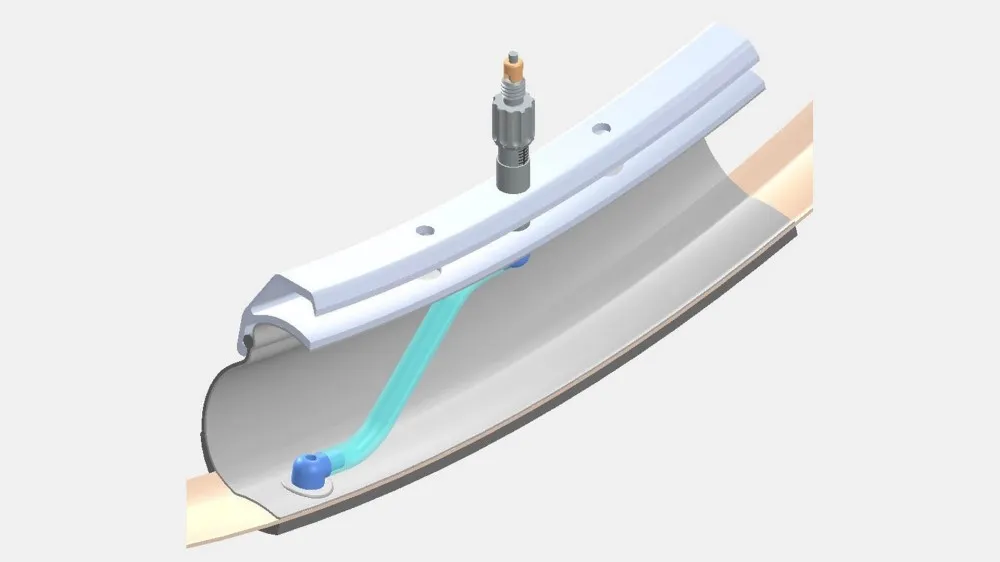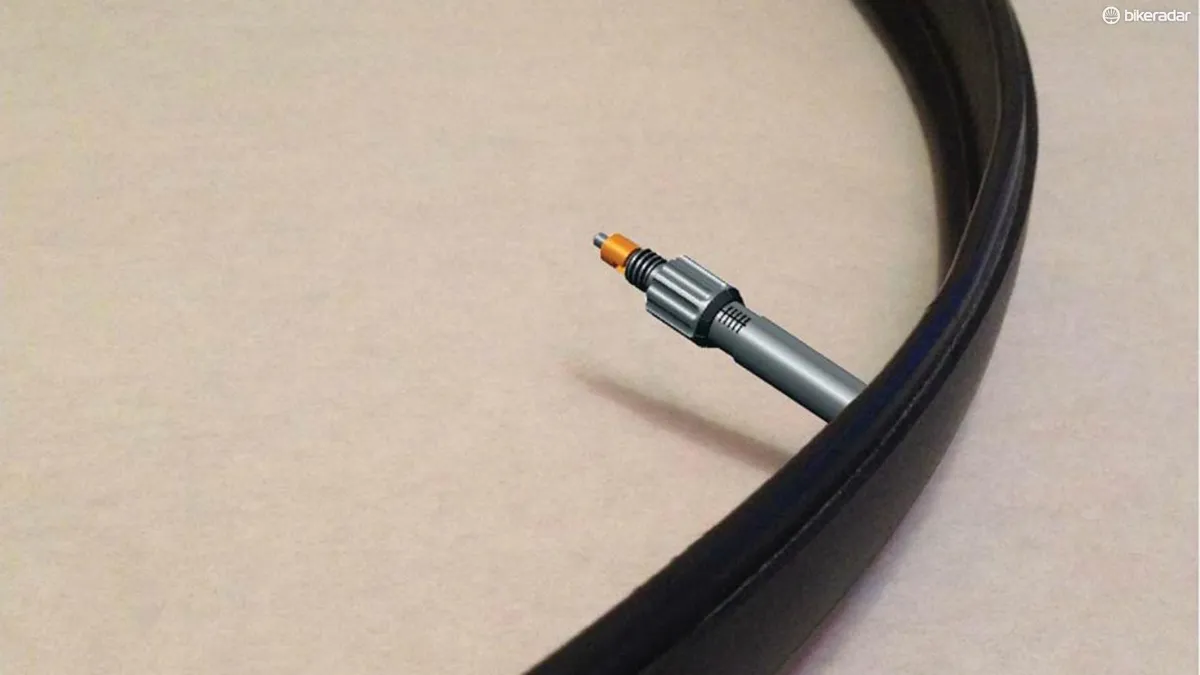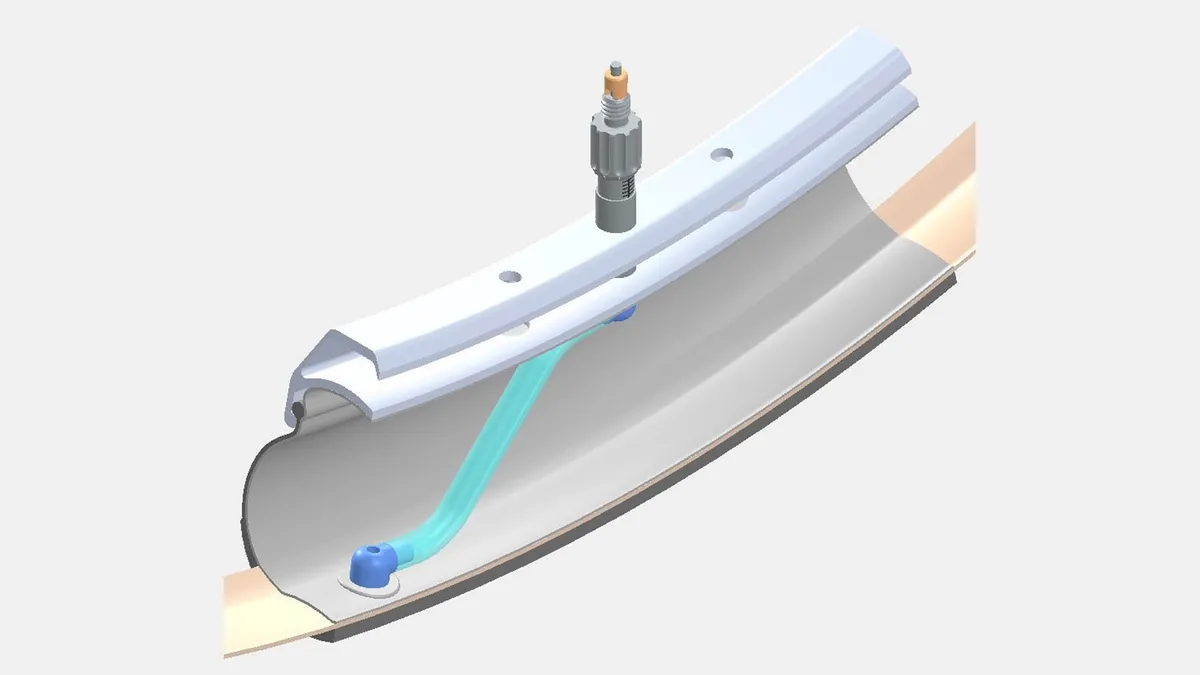Pumping up your tires is part and parcel of riding bikes. Lose pressure and your ride is slower and less efficient
But constantly having to check your tire pressure and pump up your wheels can be a hassle for maintenance-shy, fit-and-forget riders. If that's you, the designers behind PumpTire aim to put an end to put an end to your woes.
PumpTire is a new self-inflating inner tube, which uses a cunning peristaltic pump action (more on this below, in case you're like us and don't use words as big as 'peristaltic' that often) to regulate and maintain pressure automatically as you ride.
Designed by Bejamin Krempel and a team of designers and engineers, with the cooperation of University of Bern and ETH Zurich, the first working prototype has, apparently, yielded excellent results. PumpTire is planning to launch a crowdfunding campaign early in 2016 to elevate the project to the next level.
It's impossible, right?
"We started with a self-inflating tire, and at that time cyclists would say ‘you should make a self-inflating inner tube’ – so I thought sure, that’s a great idea, except it’s impossible." Krempel told BikeRadar.
"But then we came up with an idea of how to do it. Many, many ideas later we have the current design, which has excellent ride characteristics and pumping ability," he added.
As we might have mentioned above, the PumpTire inner tube uses a peristaltic pump to maintain internal pressure and draw more air into the tube via a bespoke valve.
Peristaltic pumps use moving compression points to pump a fluid or gas around an enclosed system. Peristalsis itself is not a new invention; it occurs frequently in nature – think of the squeezing motion of the muscles in the gastrointestinal system, pushing food through your gut – and is used in many technical devices, particular in medicine.
In the self-inflating tube, a peristaltic pump runs around the perimeter of the tube. The compression comes from the deformation of the tire at the contact point with the ground, which squeezes the inner tube, pushing air ahead of the compression point into the tube. When the tire rolls on and each point returns to its original shape, the expansion produces a vacuum that sucks new air in via the valve system.
The pressure the tube runs at can be set using the valve. Initial plans are to develop products with commuters – who are likely to prioritise conveniece over out-and-out tire performance or feel – in mind. Designs are in the pipeline for 700c and 26in wheels with broad 35-42mm tire widths.
Krempel also told us that the valve used would be compatible with standard Presta pumps, and can be deflated using the integral valve system.

A detail from the PumpTire inner tube, detailing the workings of the valve system. The company is cagey about revealing too many other details about its invention
Next steps
The PumpTire design is still being refined, with the final construction materials yet to be decided. Questions remain around how easy the PumpTire inner tube would be to use in practice, how heavy the resulting tube would be and the age-old issue of punctures.
With regard to the latter, Krempel claimed that the plastic of the pumping mechanism should provide a sturdy enough barrier to prevent serious issues, at least with minor holes.
“In the case that it punctures the pumping mechanism,” he said. “It probably will still be able to pump depending on where the puncture is. It wouldn’t pump as efficiently though, as some air would escape through the puncture.”
The question of the PumpTire's eventual cost is also yet to be answered, and would likely play a part in the popularity of the product, alongside its actual performance.
Could this intriguing invention be a handy development for commuters, reducing the amount of regular attention that needs to be spent on a bike to keep it road-ready? Let us know in the comments below.


